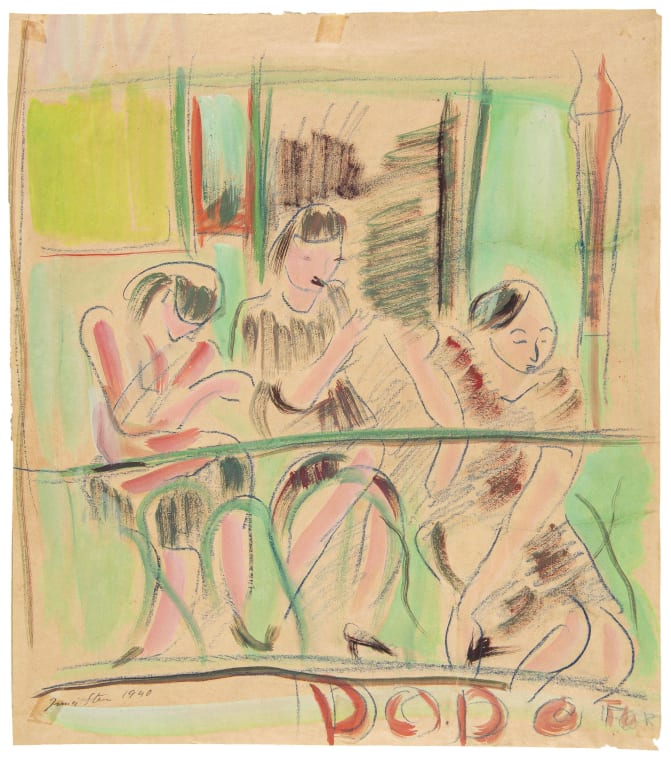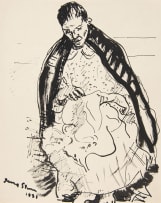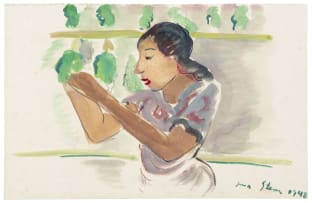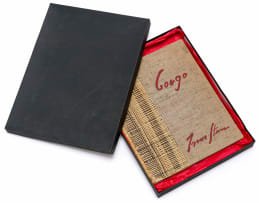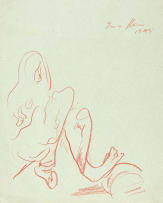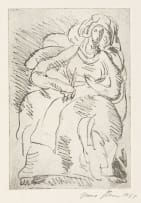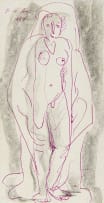Irma Stern: Time|Line
Live Virtual Auction, 8 June 2022
Irma Stern: Time|Line
About the SessionIncl. Buyer's Premium & VAT
About this Item
signed and dated 1940; inscribed with the accession number in pencil on the reverse
Notes
Stern's direct association with key figures in the German Expressionist movement has, over time, seen her offered as a pioneer proponent of its stylistic traits and thematic interests in South Africa. This is a distortion of a more complex history. Aside from Maggie Laubser, who studied in Weimar Berlin, other early champions of expressionism in SouthAfrica included Wolf Kibel and Moses Kottler, both of whom trained in Europe. Kibel and Stern moved in the same circles. For instance, Roza van Gelderen (see lot 12), the charismatic head of Central Girls' School and cultural savant, frequently asked artists - including Kibel and Stern - to speak to her art students.1
This lot gestures to this social history. In 2012, Strauss & Co sold Kibel's watercolour, Three Women on a Balcony, an unusually large work rendered in a graphic and expressive manner. Kibel's undated work portraying three female figures on a balcony bears some compositional resemblances to Stern's gouache. Kibel's work depicts Roza van Gelderen with Freda Kibel and Rachel Lipshitz, who were married to Wolf Kibel and Lippy Lipschitz.
It is well known that Kibel looked at Stern, but did Stern look at Kibel? Little is known about this. This lot, which was produced two years after Kibel's death in 1938, suggests shared aesthetic
interests. It is very likely that Stern, like Kibel, was inspired by Édouard Manet's The Balcony (1868-69), which presents three fashionable Parisian figures (including artist Berthe Morisot) posed before a shuttered door. Much like Kibel, albeit even more so, Stern renders this theatrical scene using the barest means of line and colour. Stern's work
provides the viewer with an impression of bored pleasure and longueur without getting bogged down in the fusty painterliness of Impressionism. The identities of the women in Stern's work are unknown. Highly notational in style, the work shares striking similarities with her society figures in her Art Deco influenced compositions appearing in Paradise journal (1917-24), a "visionary and ecstatic" account of her early life as an artist.2
1. Elza Miles (2003) "Foreword", Irma Stern: Expressions of a Journey. Johannesburg. Standard Bank. Page 11.
2. Neville Dubow (1991) Paradise: The Journal and Letters (1917-33) of Irma Stern. Cape Town, Chameleon Press. Page 73.
Provenance
The Irma Stern Trust Collection, accession number 812.
